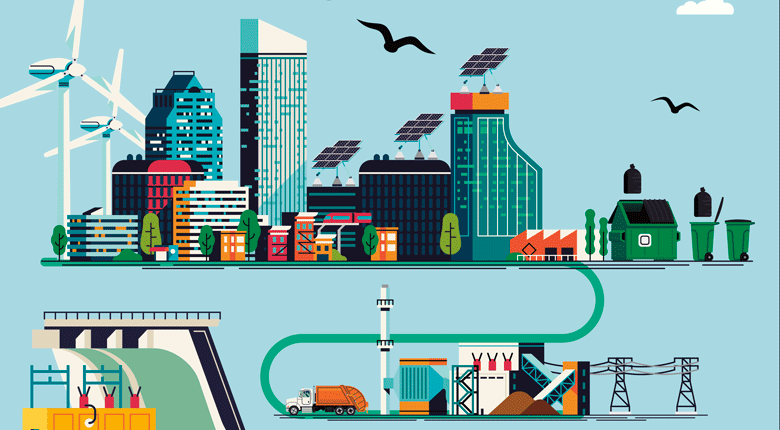

| With $772bn-worth of projects in the pipeline, MEED's Mena Power Sector Outlook 2018 report identifies where the best opportunities are this year. Find out more about the latest premium intelligence report from the MEED Insight team here |
Power is one of the most active segments of the Middle East and North Africa (Mena) projects market. Governments across the region have made investing in generation capacity and transmission and distribution networks a priority in order to meet the demands of population growth and industrial and economic expansion, as well as the increasing need to replace ageing infrastructure.
Installed generation capacity in the Mena region reached 363.9GW at the end of 2017, a rise of 5.4 per cent over 2016. Based on current plans, electricity generation capacity is expected to rise at 6.2 per cent a year to reach about 547GW of installed capacity by 2025.
New data
According to newly released data published in MEED's Mena Power Sector Outlook 2018, the latest research report from the MEED Insight team, about $772bn-worth of power generation and transmission projects are planned or under way in the region. And while the fall in oil prices in 2014 led to a scaling back or cancelling of many projects, investment in the power sector has continued – a healthy $29.4bn-worth of power contracts were awarded in 2017.
Click here for more details on MEED's Mena Power Sector Outlook 2018 report
However, in parallel to the capital investment drive, important changes are under way. In the past three years, the region has embarked on energy reforms that are creating new opportunities and challenges.
Natural gas will remain the dominant source of energy for the region as it is cleaner and more efficient than conventional fuel oil and will protect oil reserves for export. But producing enough natural gas is a challenge for the region and sourcing new gas supplies is a priority.
To reduce dependence on uncertain gas supplies and increase energy security, diversification of the energy mix is high on the agenda. At the same time, sustainability and energy efficiency have become powerful forces behind shifts in policy such as the removal of energy subsidies that have kept energy and water tariffs artificially low.
Alternative schemes
Together, these drivers have led to a raft of renewable and alternative energy projects. Most counties have set ambitious targets for the proportion of energy they receive from alternative sources. The UAE, for example, aims to generate 50 per cent of its energy from clean sources by 2050, up from almost zero today. Riyadh has plans to install 9.5GW of new renewable energy generation capacity by 2023.
Renewable energy represented about 7 per cent of total Mena electricity generation capacity in 2017. The majority of installed renewable capacity comes from hydroelectric power, at 19GW or 83 per cent of the total. By 2025, solar power is forecast to account for the biggest share of renewable power.
Overall, there is more than 60GW of renewable energy projects at the design and study stages, of which about 23.1GW originates from independent power plants (IPPs).
Feed-in tariffs
The introduction of feed-in tariffs, where governments pay producers to supply additional power to national grids, has played a major role in creating and growing the market for renewable energy in the Mena region. Establishing national agencies to promote renewable technologies has also gone a long way in supporting market growth.
Several governments in the Mena region are also developing nuclear power programmes. Abu Dhabi is scheduled to bring the region’s first nuclear plant on stream in 2019 and the country expects to have four commercial nuclear reactors online before 2020.
The King Abdullah City for Atomic & Renewable Energy in Saudi Arabia is also planning to construct 16 nuclear reactors by 2040, and Jordan and Egypt have signed deals with Russia’s Rosatom to build nuclear reactors.
Procurement changes
Procurement models are changing, too. Many governments are turning to private-sector financing models such as IPPs and independent water and power projects (IWPP) to produce affordable electricity on a commercial scale. The planned pipeline of IPPs and IWPPs will deliver additional power generation capacity of about 58.3GW from 2018–2025.
Middle East & North Africa Power Outlook 2018 provides a comprehensive country-by-country review of the Mena power sector with in-depth analysis on supply and demand, projected investment levels, the role of the private sector and the search for alternative energy.
| This article is an excerpt from MEED’s Mena Power Sector Outlook 2018 report. Click here for more details |
You might also like...

Rainmaking in the world economy
19 April 2024

Oman receives Madha industrial city tender prices
19 April 2024

Neom seeks to raise funds in $1.3bn sukuk sale
19 April 2024

Saudi firm advances Neutral Zone real estate plans
19 April 2024
A MEED Subscription...
Subscribe or upgrade your current MEED.com package to support your strategic planning with the MENA region’s best source of business information. Proceed to our online shop below to find out more about the features in each package.






